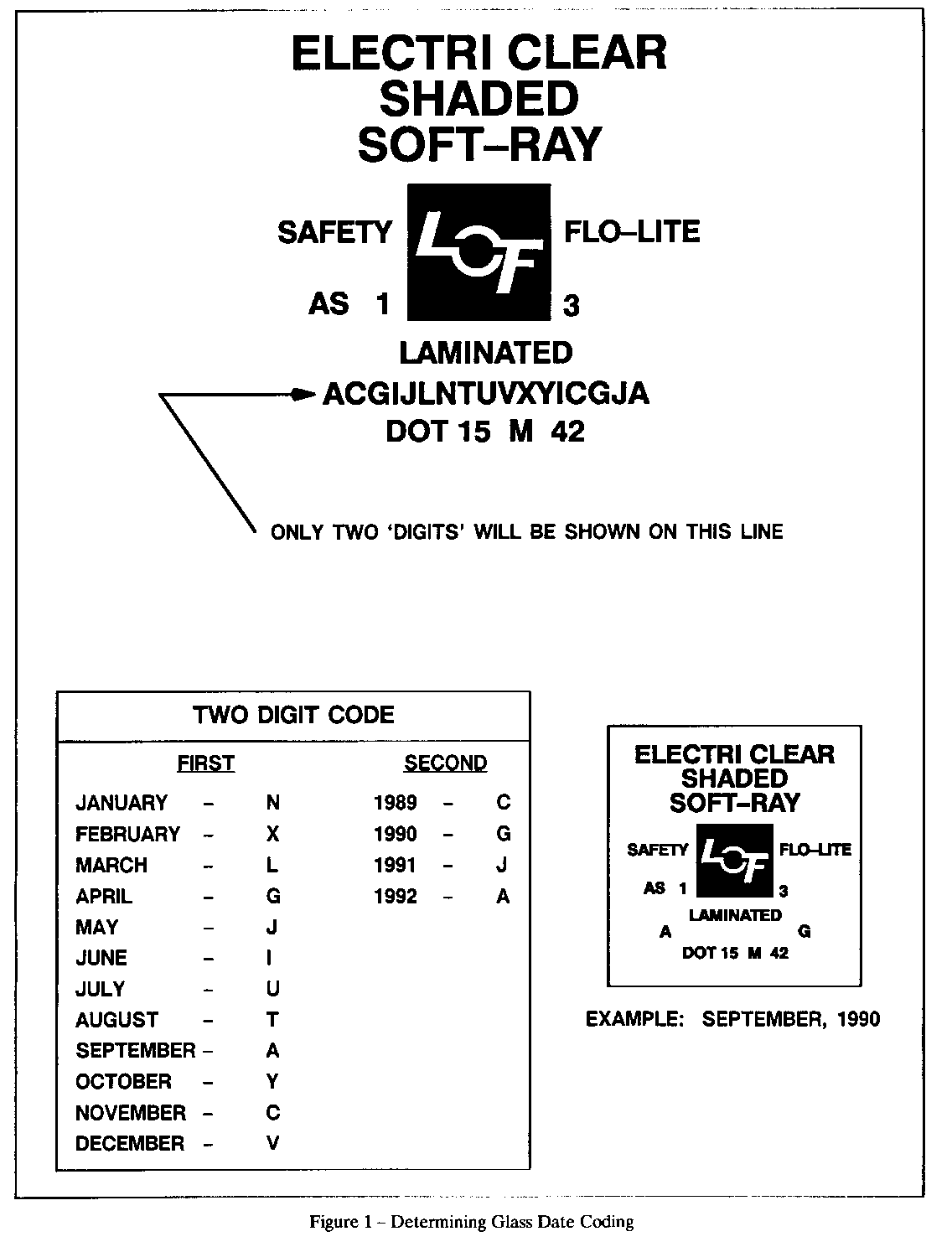HEATED WINDSHIELD CRACKS (APPLY FOAM INSULATION)

SUBJECT: HEATED WINDSHIELD CRACKS (APPLY FOAM ACOUSTICAL/ISOLATION SEAL)
MODELS AFFECTED: 1989-1991 "C" MODELS WITH OPTION C50
Some 1989-1991 DeVilles and Fleetwoods equipped with heated windshields (option C50) may exhibit white spots, distortion, or cracks in the windshield surface that occur for no apparent reason. These conditions may be caused by stone chips, the glass manufacturing process, and/or body build variations resulting in added stress to the glass.
IMPORTANT: Cracking due to stone chips and exterior stresses will occur at a higher rate on heated windshields due to the direct, internal application of heat to the glass. Small chips which may not be noticeable and normally would not result in a crack will suddenly propagate when the heated windshield option is used.
Design and manufacturing revisions have been made as of October, 1990. The windshield date of manufacture can be determined from the glass monogram. Refer to Figure 1. Improved glass will show one of the following date codes:
YG, CG, or VG Corresponding to 1990 glass manufactured in October, November, and December respectively.
_J 1991 glass - any first digit with J as second letter.
Inspect replacement windshields prior to installation into vehicle. Windshields manufactured prior to the above breakpoints should not be used.
WINDSHIELD INSTALLATION
The steps below are to be used with the replacement procedures found in Section 10-2 of the 1991 Service Information Manual. Use of these steps to isolate the windshield from the body will reduce external stresses that may cause cracks. An explanation of when to use the short or extended method is also provided in the Service Manual.
Both Methods:
o Dry set the windshield to evaluate fit according to published procedures. Adjust height of remaining urethane bead as necessary (short method). Determine amount of new urethane required.
o Be sure to apply a foam acoustical/isolation seal, P/N 25540623, to the bottom of the new glass. Position the foam seal along the line provided in the black-out area of the glass with the seal above the line. If necessary, refer to the old glass for proper location.
o Upon windshield installation, ensure the glass is centered in the opening and not contacting the body pillars or trim. It may be necessary to rotate the interior pillar trim away from the glass, or remove it until after glass installation to prevent interference. Use of the tape guide applied during dry set will help in positioning the windshield.
Short Method Only:
o When removing the windshield, the short method should be used whenever possible. This method maintains 3-5mm of the old urethane on the body opening flange as a base for the new application. The urethane base should be level; trim the high spots and fill any low areas with new urethane.
Extended Method Only:
o Once all of the old urethane has been removed from the body opening, inspect the flange for irregularities. Rework high spots, which may cause concentrated stress points after glass installation.
o After required body and paint work have been completed and urethane bonding body primer has been applied to the body opening flange, fill any remaining low spots with new urethane to ensure proper wet-out in these areas during windshield installation.
o When preparing the body for reinstallation of the windshield, do not use spacers at top and sides. Evaluate the need for spacers at the bottom during dry set.
Use the most applicable Labour Operation and Time from the Canadian Labour Time Guide.

General Motors bulletins are intended for use by professional technicians, not a "do-it-yourselfer". They are written to inform those technicians of conditions that may occur on some vehicles, or to provide information that could assist in the proper service of a vehicle. Properly trained technicians have the equipment, tools, safety instructions and know-how to do a job properly and safely. If a condition is described, do not assume that the bulletin applies to your vehicle, or that your vehicle will have that condition. See a General Motors dealer servicing your brand of General Motors vehicle for information on whether your vehicle may benefit from the information.
